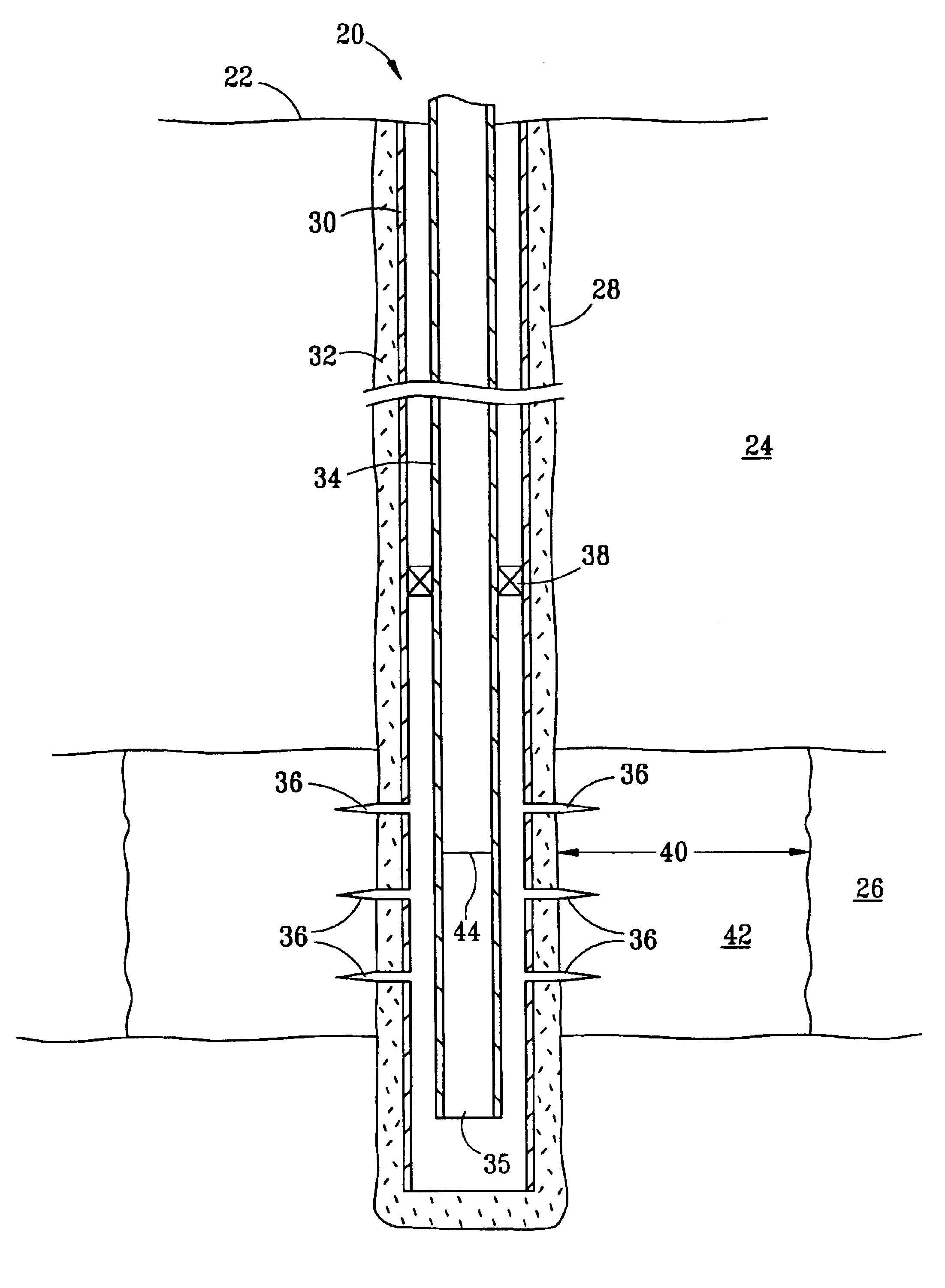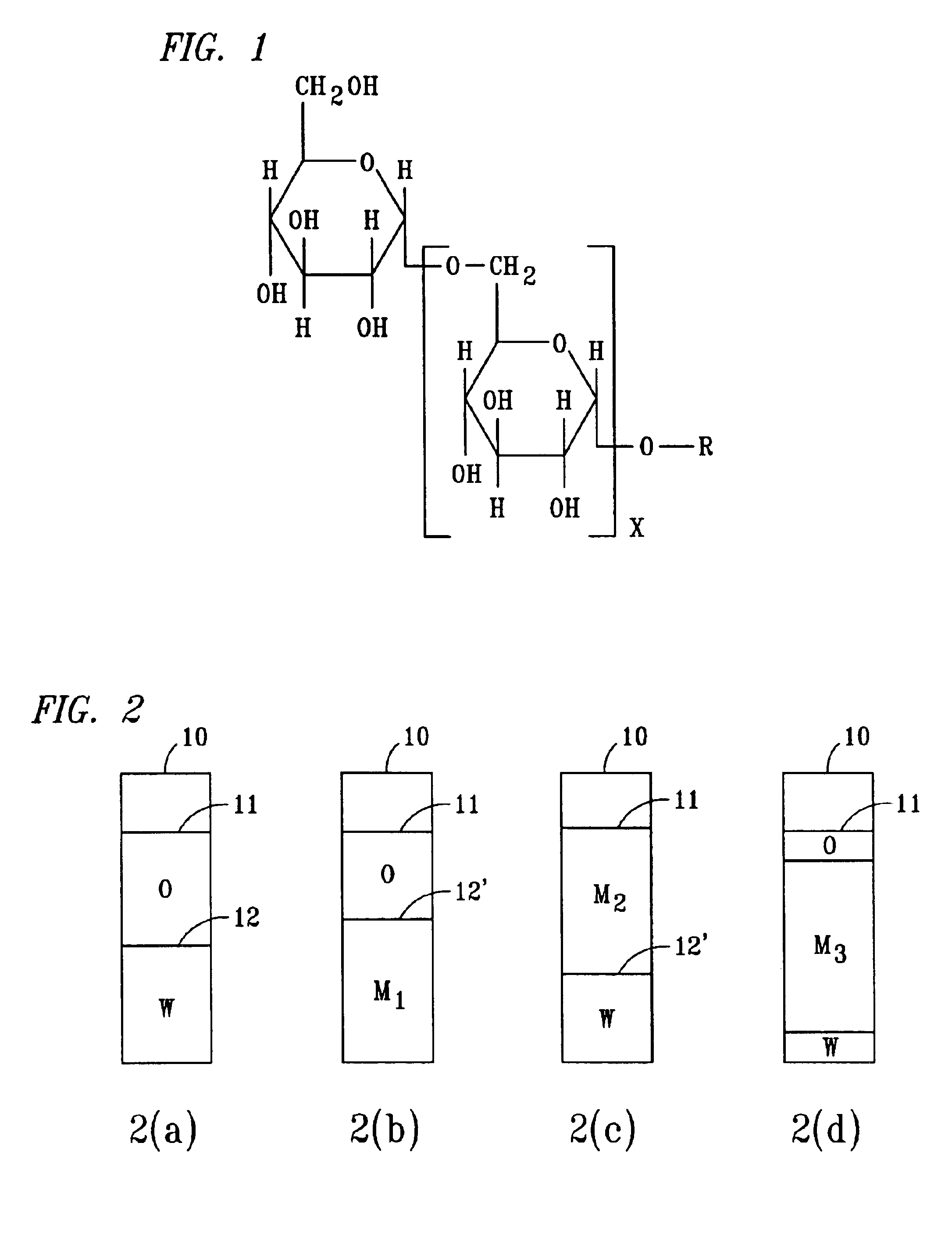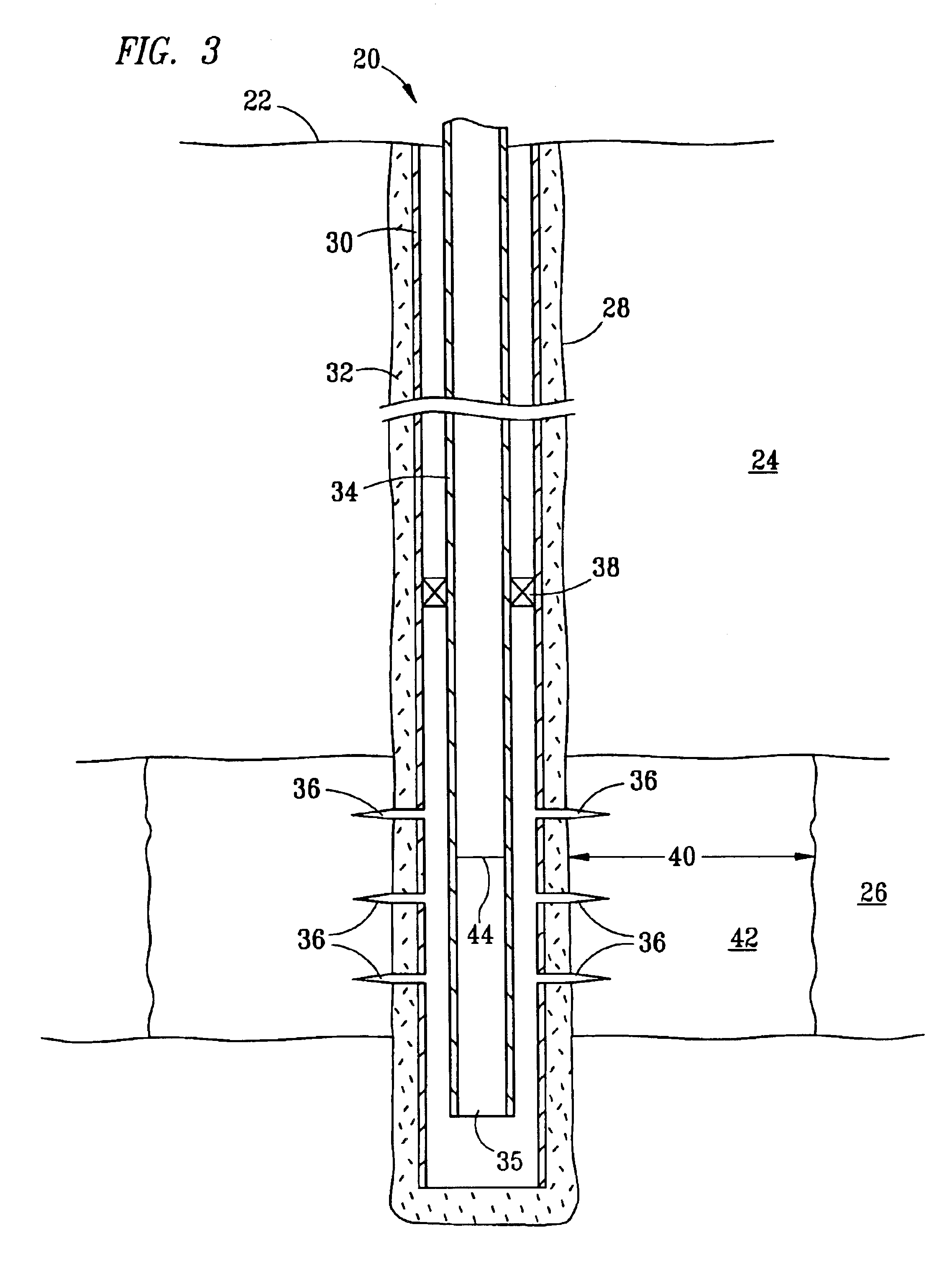Water block removal with surfactant based hydrocarbonaceous liquid system
a hydrocarbonaceous liquid and surfactant technology, applied in the direction of sealing/packing, other chemical processes, borehole/well accessories, etc., can solve the problems of limited success of such approaches, less than completely successful, and less desirable
- Summary
- Abstract
- Description
- Claims
- Application Information
AI Technical Summary
Benefits of technology
Problems solved by technology
Method used
Image
Examples
example 1
[0042]
TABLE IInterfacial Tension MeasurementArctic DieselSurfactant FluidEquilibrationComposition6% KCl BrineTemperatureIFT, dyne / cm80%20% 68° F.0.001837080%20%160° F.0.000268060%40% 68° F.0.019680060%40%160° F.0.0008835
[0043]Quantities of the Arctic diesel surfactant fluid composition as described above were mixed with KCl brine in the quantities shown. The quantities of brine in the test were chosen to reflect the range of water saturation present in the near wellbore formation. The KCl brine is used because the drill-in fluid composition, hence the drill-in-fluid filtrate, contains a brine salinity of 6 percent by weight KCl brine. The interfacial tension between the microemulsion phase and excess brine phase in the mixture is then measured by the spinning drop apparatus at the temperatures shown. It will be observed that these interfacial tensions are very low. By comparison, the interfacial tension between oil and water at room temperature is typically considered to be about 40...
example 2
[0044]In this Example, core plugs of a formation known to imbibe water were tested. These cores were virgin cores from a formation and were 1 inch in outer diameter by 1 to 2 inches long. In these tests, the core plugs were first treated by passing oil and then water through the cores. Thereafter the composition of the present invention was injected into the cores. The test program consisted of:
[0045]1. Drill plugs (1″ OD) from preserved core material using liquid nitrogen.
[0046]2. Mount test samples (plugs), apply full reservoir pressure and overburden pressure and heat to reservoir temperature.
[0047]3. Press aqueous filtrate from samples of a water-based drilling mud, specifically FLO-PRO drilling field mud (Trademark of M-I, LLC).
[0048]4. Measure baseline permeabilities to oil on the samples at 5, 20, 50, and 100 psi drawdown pressure levels.
[0049]5. At 100 psi overbalance level flush plug with the aqueous filtrate until approximately 2 pore volumes of production of filtrate is r...
example 3
[0058]An actual well having 2,300 feet of 6-⅛″ horizontal open-hole section in a producing formation in the North Slope of Alaska was treated with the composition of the present invention. The Arctic diesel oil was present in an amount of 96.5 volume percent, the alkylpolyglycoside was present in an amount of 0.42 volume percent with the ethoxylated alcohol and the linear alkyl alcohol being present in amounts of 1.05 volume percent and 2 volume percent respectively.
[0059]
Test III. Field TestFlowingOilGas / OilTubing PressureTemperatureDatebbl / dayRatio (GOR)(FTP) (psi)° F.Pre-treatment93694318852Post-treatmentDay 1100192179857Day 2262861221677Day 31843105619871Day 4168488219571Day 5132065918966Day 6173393619567Day 7174389219567
[0060]It is immediately apparent that the oil production from the treated well has been increased from 936 barrels per day (bbl / day) prior to treatment to about 1743 bbl / day after the treatment. This is a significant improvement, almost a doubling of the product...
PUM
| Property | Measurement | Unit |
|---|---|---|
| radial distance | aaaaa | aaaaa |
| time | aaaaa | aaaaa |
| volume percent | aaaaa | aaaaa |
Abstract
Description
Claims
Application Information
 Login to View More
Login to View More - R&D
- Intellectual Property
- Life Sciences
- Materials
- Tech Scout
- Unparalleled Data Quality
- Higher Quality Content
- 60% Fewer Hallucinations
Browse by: Latest US Patents, China's latest patents, Technical Efficacy Thesaurus, Application Domain, Technology Topic, Popular Technical Reports.
© 2025 PatSnap. All rights reserved.Legal|Privacy policy|Modern Slavery Act Transparency Statement|Sitemap|About US| Contact US: help@patsnap.com



